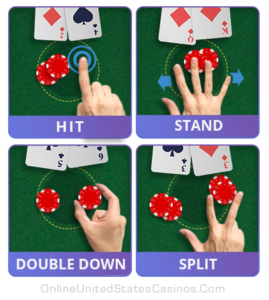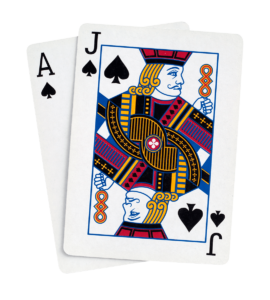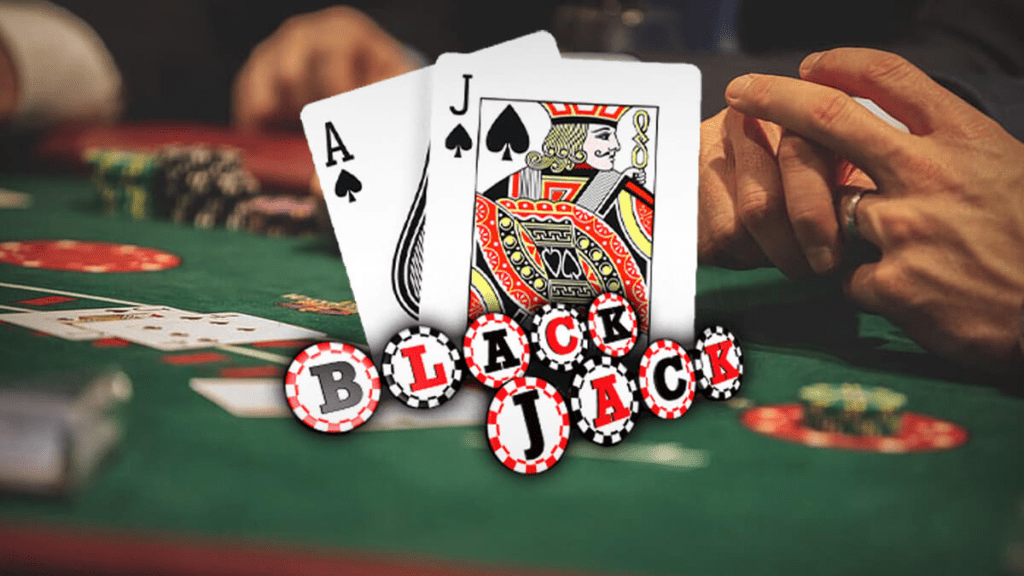What is Blackjack?
Blackjack (formerly Black Jack and Vingt-Un) is a casino banking game. It is the most widely played casino banking game in the world. It uses decks of 52 cards and descends from a global family of casino banking games known as Twenty-One. This family of card games also includes the European games Vingt-et-Un and Pontoon, and the Russian game Ochko [ru]. Blackjack players do not compete against each other. The game is a comparing card game where each player competes against the dealer.
- Welcome to this online blackjack page where you can play the best free blackjack games. The benefits of playing online are that you can learn blackjack rules in no rush and there is no actual monetary loss if you lose! You can click the menu button on the top right corner to read the rules. What’s best: We also automatically save your game so you can come back anytime to play blackjack online! Remember, you don’t win because you are closer to the value of 21 — you win because your combined value of the cards is greater than that of dealer.
- A card game the object of which is to be dealt cards having a higher count than those of the dealer up to but not exceeding 21.
- An ace and a face card or ten as the first two cards dealt to a player in the game of blackjack
- A hand weapon typically consisting of a piece of leather-enclosed metal with a strap or springy shaft for a handle
History of blackjack
Blackjack is one of the most popular casino games in the world, enjoyed by huge numbers of people every day in land-based and online casinos. However, as you can see from this history, its origins are still disputed to this day.
17th century
The first ever reference to a game similar to blackjack came in a Spanish tale called Rinconete y Cortadillo, in the 17th century. There are some who think that the game dates back even further, though, possibly even back to the time of the ancient Egyptians.
18th century
There are other theories as to the origins of blackjack, too. One of the most widely supported is that it originated in France in the 18th century, with a game known as Vingt-et-Un. References to this game can be found in the book Round Games with Cards, which was written by Baxter Wray in 1891. In this book he describes the game as a popular one.
21st century
Regardless of where the original form of blackjack originated, it gradually spread around both France and Spain. From there, it began to migrate to the casinos of the United States, where it was referred to as twenty-one – a name still commonly used to refer to the game today. Single deck blackjack is still by far the most common game type.
Advanced blackjack strategies, rules and tips
Blackjack Strategy
1. When the value of dealer’s revealed card is 4,5 or 6, it may be fruitful to double your bet with an Ace and 4 in hand.
2. You may want to surrender if you have 16 in your hand while the dealer has a 9,10 or A.
3. You should always split if you have a pair of Aces.
4. If you get a pair of 7s, only press hit if the dealer has 8,9,10 or Ace.
Play Blackjack for free now to test whether the strategy works!


Blackjack Tips


Blackjack Strategy


Card Counting


How to play
Player decisions
After the initial two cards, the player has up to five options: “hit”, “stand”, “double down”, “split”, or “surrender”. Each option has a corresponding hand signal.


- Hit: Take another card.
- Signal: Scrape cards against the table (in handheld games); tap the table with a finger or wave a hand toward the body (in games dealt face-up).
- Stand: Take no more cards; also known as “stand pat”, “sit”, “stick”, or “stay”.
- Signal: Slide cards under chips (in handheld games); wave hand horizontally (in games dealt face-up).
- Double down: Increase the initial bet by 100% and take exactly one more card. The additional bet is placed next to the original bet. Some games permit the player to increase the bet by amounts smaller than 100%, which is known as “double for less”.[12] Non-controlling players may or may not double their wager, but they still only take one card.
- Signal: Place additional chips beside the original bet outside the betting box and point with one finger.
- Split: Create two hands from a starting hand where both cards are the same value. Each new hand gets another card so that the player has two starting hands. This requires an additional bet on the second hand. The two hands are played out independently, and the wager on each hand is won or lost independently. In the case of cards worth 10 points, some casinos only allow splitting when the cards rank the same. For example, 10-10 could be split, but K-10 could not. Doubling and re-splitting after splitting are often restricted. A 10-valued card and an ace resulting from a split usually isn’t considered a blackjack. Hitting split aces is often not allowed. Non-controlling players can opt to put up a second bet or not. If they do not, they only get paid or lose on one of the two post-split hands.
- Signal: Place additional chips next to the original bet outside the betting box and point with two fingers spread into a V formation.
- Surrender: Forfeit half the bet and end the hand immediately. This option is only available at some tables in some casinos, and the option is only available as the first decision.
- Signal: Spoken; there are no standard signals.
OTHER GAMES
Baccarat
A card game resembling chemin de fer in which three hands are dealt and players may bet either or both hands against the dealer’s
Dragon Tiger
Depending on whether you bet on the Dragon or the Tiger box, you win if the highest card appears on that particular option.
Poker
Any of several card games in which a player bets that the value of his or her hand is greater than that of the hands held by others, in which each subsequent player must either equal or raise the bet or drop out, and in which the player holding the highest hand at the end of the betting wins the pot
Craps
Craps. / (kræps) / noun(usually functioning as singular) a gambling game using two dice, in which a player wins the bet if 7 or 11 is thrown first, and loses if 2, 3, or 12 is thrown.
Sic Bo
The literal meaning of sic bo is “precious dice“, while dai siu and dai sai mean “big [or] small”.
Roulette
A gambling game in which a ball is dropped onto a revolving wheel ( roulette wheel ) with numbered compartments, the players betting on the number at which the ball will come to rest.




